Hidden in a cave in the middle of the Thai jungle, cave paintings have just been unearthed by a team of intrepid archaeologists. A rare find dating back over two thousand years.
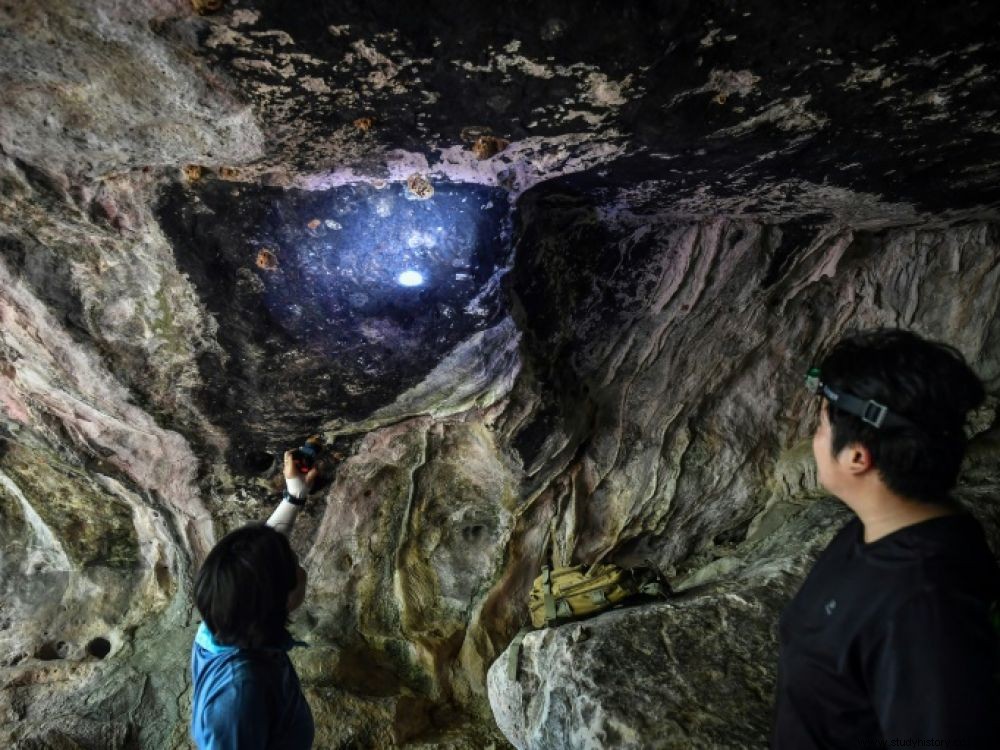
Thai archaeologists in front of rock paintings discovered at Sam Roi Yot National Park, southwest of Bangkok, on September 10, 2020
A solitary antelope, an enigmatic silhouette, a family holding hands:hidden in a cave in the middle of the Thai jungle, cave paintings have just been brought to light by a team of intrepid archaeologists, a rare discovery dating back to more than two thousand years.
"I screamed very loudly"
Kanniga Premjai climbs a hill in Sam Roi Yot National Park four hours southwest of Bangkok, scrambling through the thorny forest. Having reached the top, she enters a cavity and points with her flashlight to the horns of an antelope engraved in stone.
"At first we thought it was rust accumulated on the walls" , tells AFP the 40-year-old archaeologist. But, quickly, thanks to a mobile application intended for archaeological prospecting, she distinguishes drawings. "I screamed very loudly" . Its discovery, on May 14, crowned months of totally fruitless research with 40 caves explored without success.
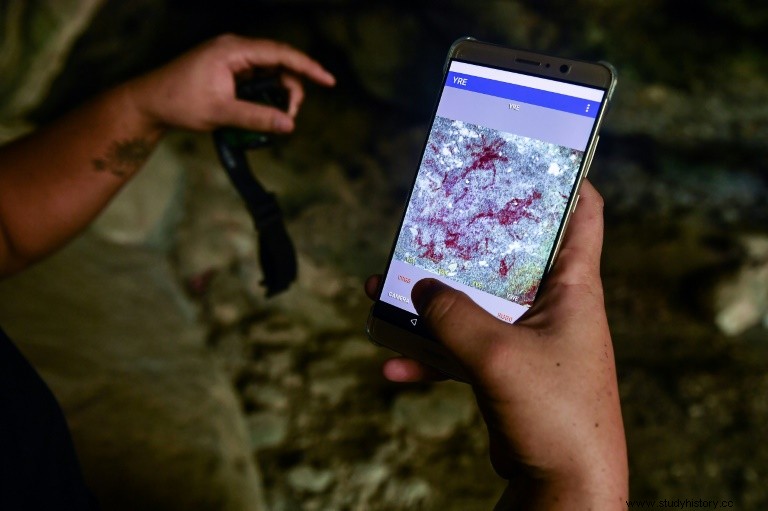
A Thai archeologist uses a mobile application to distinguish between rock paintings discovered at Sam Roi Yot National Park, southwest of Bangkok, on September 10, 2020 (AFP - Lillian SUWANRUMPHA)
Former royal capitals, Khmer cities, temples:Thailand has unearthed many vestiges which, before the coronavirus pandemic, attracted millions of visitors each year.
Searching for cave paintings is much more complicated:the sites are difficult to access and the Department of Fine Arts of Thailand, responsible for archaeological prospecting, is sorely understaffed:in the Ratchaburi branch (south) which covers six Thai provinces, only a team of three archaeologists, including Kanniga Premjai, is dedicated to this type of excavation.
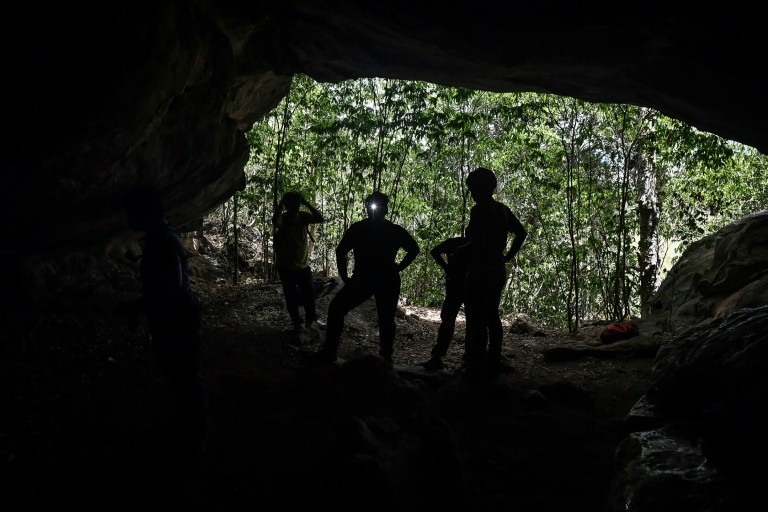
Thai archaeologists in front of rock paintings discovered in Sam Roi Yot National Park, southwest of Bangkok, on September 10, 2020 (AFP - Lillian SUWANRUMPHA)
In Thailand, most of the work "is to preserve what has already been found" , explains Noël Hidalgo Tan, of the regional center of archeology and fine arts of Southeast Asia. "There are a lot of sites still unexplored". "We never know what we're going to stumble upon" , points out Kanniga Premjai, sneaking into the other chambers of the cave. You have to search every corner, every cliff, every cavity.
"Finding paintings is like digging up treasure"
In 2016, the authorities updated the first paintings in this area of Sam Roi Yot Park, prompting the scientist to push the research further. Its discovery confirms its first hypotheses, of an ancient human presence in the region.
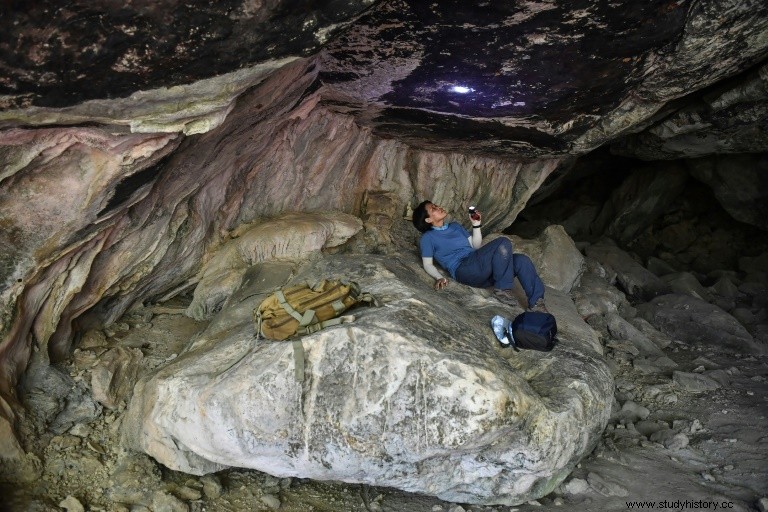
A Thai archaeologist examines rock paintings discovered at Sam Roi Yot National Park, southwest of Bangkok, on September 10, 2020 (AFP - Lillian SUWANRUMPHA)
Hunter-gatherers lived here around 3,000 years ago, explains Noël Hidalgo Tan. According to the seasons, "they moved from one camp to another and (this cavity), in the mountain, could have been one of their bases".
The expert is concerned about the preservation of the site. "To preserve the caves and protect them, you have to find money, unfortunately, it is not nearly as profitable" than an ancient temple or an ancient palace.
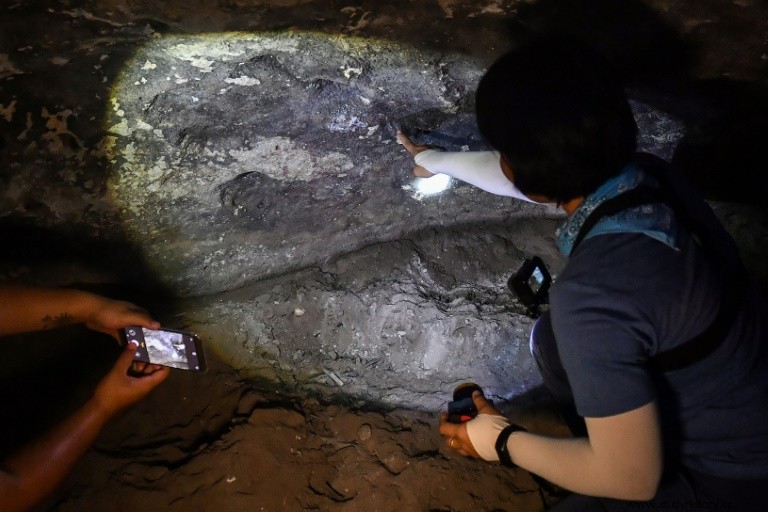
Thai archaeologists examine rock paintings discovered at Sam Roi Yot National Park, southwest of Bangkok, on September 10, 2020 (AFP - Lillian SUWANRUMPHA)
They cannot easily be opened to tourists either, given their difficult access. But Kanniga Premjai is undeterred. "Finding paintings is like digging up treasure (...) The charm of archeology is never to be bored".
Sam Roi Yot's paintings are not the oldest discovered in Thailand:others have been discovered in the north of the country on sites occupied 5 to 11,000 years ago.
